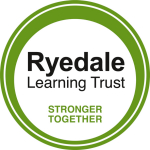Chopin’s Raindrop Prelude in Db major is a beautiful example of a Romantic piano miniature. It represents many musical features which are typical of the Romantic period (c.1830-1900, depending on which textbook or website you read).
3. 'Raindrop' Prelude No. 15 In D Flat Major - Chopin (GCSE Music Edexcel)
Very basic facts on...''Raindrop' Prelude No. 15 in D flat major' - by Frédéric ChopinFrom '24 Preludes, Opus 28'Set Work 3 for GCSE Music EdexcelFrom Area O...
What are the key features of Romantic music?
Romantic music differs from Classical and Baroque music in a variety of different ways.
Task: Find out the following pieces of information to help you build a picture as to how it differs:
- What happens to the size of the orchestra? Are there any new instruments?
- Who are the most important Romantic period composers, apart from Chopin?
- Which genres are important in the Romantic period?
- What is programme music?
- What is a piano miniature?
- What is tempo rubato?
Please email me your answers to these questions, with ‘Key features of Romantic music’ in the subject line.
Extension task: Listen to one or two more pieces of Romantic music. At the end of the ‘Key features’ email, include the name of the piece(s)/composers you’ve listened to, and any comments that you want to make about them.
Use this page from the Classic FM website as a good starting point. For something more in-depth, there is a great podcast here to listen to.
Who was Frederick Chopin?
Chopin is one of the most important composers of the early/mid-Romantic period. He wrote almost exclusively to the piano, and certainly did a lot to explore the capabilities of the more modern instrument. Again the Classic FM website is a good starting point here.
Task: Find out a bit about who Chopin was. Although he was from Poland, where did he live for most of his adult life? What sort of music did he write. Make some brief notes in your score.
Raindrop Prelude
Chopin wrote a series of piano preludes, one for each major and minor key, in 1838.
Task: Start by finding out the basics of the piece, and marking them in your score:
Key; time signature; tempo marking – what does sostenuto mean?; main sections (signified by double bar lines); also make a note of the extremes of dynamics too at this point.
Structure Tasks/Info
One of the big changes in the Romantic period is the expansion of structure. Pieces, even short ones like this, have loner, more complex structures. This prelude (what is a prelude?) is in modified ternary form – how does this form work? Which section is the longest? Look at bar 28, 76 and 81 for structural points of importance in the music.
Melody Tasks/Info
There are two main features to the melody in this piece – the length of phrases, and the way ornamentation is used. How regular in length are the phrases in this piece? Use the slurs above the right hand to help you, and look beyond the first couple before deciding. Then, can you find different examples of ornaments? Which ornaments are used? – choose from trills, turns, mordents, acciaccaturas and appoggiaturas. If you are confused, click here for some extra help.
The melody is further decorated by the use of chromaticism, which again is typical of the Romantic period. This also affects the harmony too. Understanding chromaticism in Romantic music is important, and this definition is quite full but easy to follow.
Also, think about where in the piano the melody is played. Is the melody always in the right hand? Look at the middle section of the piece and compare it with the opening.
Harmony and Tonality Tasks/Info
The harmony and tonality is also typical of the Romantic period.
- The raindrops are represented by the dominant pedal which begins in bar 1. This pedal remains almost constant, but there are some changes in bar 15, 28 and 56. What is the significance of these changes
- The music modulates to related keys, such as the relative minor (what bar does this happen?), but there are other more unusual modulations, to the tonic minor (where?).
- Also the music is much more chromatic, as mentioned above in the melody paragraph, but this also creeps into the harmony too (where – look for a series of different accidentals that are not in the melody).
- Cadences, in this piece usually perfect, play an important role at the ends of phrases still. All cadences are perfect, except the imperfect cadence in bar 27.
Dynamics, Articulations, Tempo, the Piano and ‘Programmatic’ elements
Chopin uses a wide range of dynamics and articulations from pp to ff, staccato, legato and accents, and a wide range of crescendos and diminuendos. In addition, think about what sostenuto, sotto voce, smorzando and slentando mean, and click here for further help.
Tempo rubato, meaning flexible tempo, is present in this performance. It requires the pianist to push and pull the tempo around subtly to enhance the expressive nature of the music. At no point in the music does it say that the performer should do this. It is just an accepted fact of the way that Romantic music is performed. This is why different performances of the same Romantic piece are all slightly different from each other.
The piano that Chopin would have played is similar to a modern one, and would have been touch sensitive, and capable of expressive dynamics and phrasing. The use of sustain pedal is very carefully marked by Chopin throughout the piece, and all of these elements allow him to create an expressive, and calm/stormy feel to the piece. For further help in understanding the role of the piano in Chopin’s music, try clicking here.
Revision
As with all the pieces, there is a three-way process to learning everything you need to know about the piece:
- Know the basics (C) – title, composer, key, time signature, instrumentation etc. This needs learning to start with.
- Understand the detail (B/A) – the technical details of the piece, and how they relate to DR G SMITH. This needs you to have written up all the detail onto your score. Listening to the piece lots whilst following through the score is what is needed here.
- Hear the detail (A/A*) – being able to recognise the sound of all the technical language in the pieces, with no score in front of you. Listening to the piece without the score is what you need to do here.
This checklist document should help you with the process.


 Ryedale School is a partner in and co-ordinator for the Yorkshire Teaching School Alliance.
Ryedale School is a partner in and co-ordinator for the Yorkshire Teaching School Alliance.